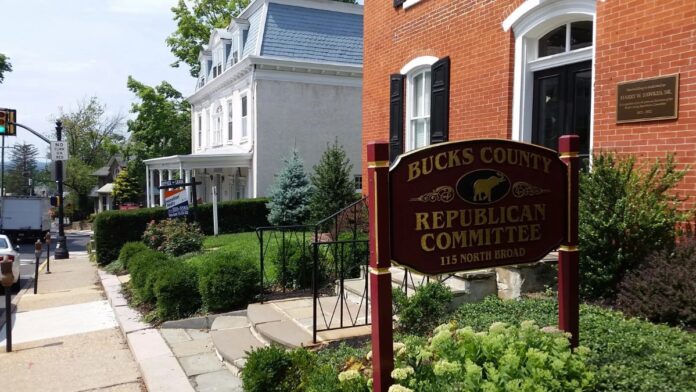Bucks County, a populous suburban area in Pennsylvania, has long been crucial to the state’s electoral outcomes.
While not as large as Philadelphia or Allegheny County, it has consistently been a political bellwether, offering insight into broader statewide trends.
In 2024, the county made headlines once again, this time for a decisive shift in voter alignment that saw Donald Trump reclaim a county he had lost in 2020.
With voter turnout remaining high, the question arises: what changed?
In an interview, Pat Poprik, a key figure in Bucks County Republican politics, explained that the surge in Republican voter turnout was a major factor in Trump’s 2024 victory.
Compared to 2020, more GOP voters showed up at the polls, and many Democrats switched their support to the Republican candidate.
The numbers tell the story—a voter registration swing of 14,000 in the GOP’s favor underscored a growing momentum that had been building since early 2024.
Poprik emphasized that grassroots efforts played a substantial role, with figures like Scott Pressler leading Republican voter outreach initiatives that translated into real electoral gains.
Traditionally more Democratic-leaning, areas like Bristol Township, Bristol Borough, and Lower Southampton saw notable Republican advances, reflecting a broader dissatisfaction with Democratic leadership.
This shift is part of an ongoing Lower Bucks political realignment that could affect future elections.
Beyond party affiliation, Poprik stated that the issues driving this shift were clear: the economy and border security.
Voters who had supported Democratic candidates in previous elections expressed frustration over economic policies, particularly concerns about inflation and energy regulations.
Union households—traditionally a Democratic base—found themselves drawn to Trump’s promises.
They were particularly attracted by his pledge to roll back electric vehicle mandates and boost domestic oil production, which they saw as a refreshing change from the Biden administration’s more restrictive policies.
The Latino vote also proved pivotal, with many feeling overlooked by Democratic leadership and opting instead for the Republican ticket.
Social issues also played a defining role in shaping voter sentiment. In recent years, Bucks County school boards became a battleground for heated debates over cultural policies.
In previous elections, Democrats had secured control of many local school boards, but by 2024, many residents had grown disillusioned with policies related to diversity, equity, and inclusion (DEI).
Poprik explained that concerns over transgender participation in women’s sports and broader curriculum changes sparked voter backlash.
Many felt these policies had gone too far and sought a shift in leadership that aligned more closely with their values.
Trump’s messaging on these issues resonated, portraying the election as a referendum on progressive policies that some voters saw as overreaching.
These cultural shifts influence Bucks County politics in ways extending beyond presidential races, affecting local governance and legislative priorities.
The data, which examine Bucks County’s 304 precincts and 54 voting districts, suggests an emerging trend that could shape future elections.
While Pennsylvania has long been considered a purple state, these results hint at a shift toward a more Republican-leaning electorate.
Western Pennsylvania, once a Democratic stronghold, has steadily turned red, and now suburban counties like Bucks are following suit.
Even in areas like Chester County, where Democrats maintain an edge, the margin is narrowing.
The combination of economic concerns, dissatisfaction with Democratic leadership, and cultural issues has created an environment where Republican candidates are gaining traction in suburban areas once considered reliably blue.
Additionally, Bucks County development has become a key factor, as shifting demographics and suburban expansion influence voter behavior.


